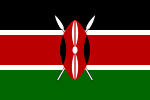This article needs additional citations for verification. (April 2019) |
| Part of a series on the |
| Culture of Kenya |
|---|
 |
| Cuisine |
The Maragoli, or Logoli (Ava-Logooli), are now the second-largest ethnic group of the 6 million Luhya nation in Kenya, numbering around 2.1 million, or 15% of the Luhya people according to the last Kenyan census. Their language is called Logoli, Lulogooli, Ululogooli, or Maragoli. The name Maragoli probably emerged later on or after interaction of the people with missionaries of the Quaker Church.[citation needed]
Maragoli also refers to the area that the descendants of a man called Mulogooli (also known as Maragoli) settled and occupied in the thirteenth century AD in the vast lands of vihiga county. Maragolis occupy the largest part of vihiga followed by Abanyore and Tiriki sub tribes. Maragoli clans include the va- masingira, Vakizungu, Va-Mavi, Va-Sachi, Va-Saniaga, Va-Vulughi, Va-Ndega, Va-sari, Va-ng'ang'a, Va-Suva, Va-Yonga, va-twa, va-gisemba... (The prefix Va- refers to the people or descendants, and is sometimes written as Ba-, Ava-, or Aba-.)
Maragolis have a unique culture that is rather simple but complex to other Luhya subtribes. The Lulogooli dialect is not easily understood by other Luhya subtribes, but Maragolis literally understand most of the languages in Luhya land. Many Maragolis have migrated to other areas due to land scarcity and have formed settlements in Trans Nzoia and Lugari Districts. Because Maragolis value their lineage, they have transferred their own local names to the places they have currently occupied, so as to preserve their identity. They also name their children after their ancestors.
